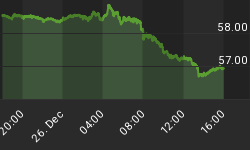This is an update on two trading models that I follow. Both have provided "buy signals" for the S&P500 within the last couple of weeks.
A popular model is to use a simple 10 month moving average to generate buy and sell signals. It is an easy strategy to implement and follow, and it appears to be robust across multiple asset classes. In essence, this strategy's "success" comes from its ability to avoid big losses (as you move to cash when prices are below the simple 10 month moving average). In any case, September's strength has led to a buy signal in the S&P500 as prices finished the month above the simple 10 month moving average.
Since 1965, this strategy has generated 1022 S&P500 points on 33 trades; buy and hold has netted about 1050 points over that time. The real benefit from the strategy comes when draw down is considered. The strategy has a maximum equity curve draw down of about 20%; buy and hold has a draw down of plus 45%.
The strategy's equity curve is shown in figure 1, and this shows that the strategy is flat in bad markets and makes money (goes parabolic?) in bull markets. I think this strategy shows a lot about market dynamics -find bull markets and avoid bear markets -if you want to make money. However, I am not a big fan of this strategy as most of the gains are concentrated in certain time periods.
Figure 1. Equity Curve
A second strategy - that I have developed and written about frequently - gave a buy signal two weeks ago. This strategy uses the simple 40 week moving average and the inflation indicator constructed from the trends in crude oil, gold, and yields on the 10 year Treasury bond. This indicator acts as a filter to weed out potentially bad trades and lock in profits. When inflation pressures are low and prices are above the 40 week moving average, this is a buy signal for the S&P500. When inflation pressures are extreme or prices below the simple 40 week moving average, this is a sell signal.
Since 1984, this strategy has generated 1518 S&P500 points on 62 trades; buy and hold netted 970 S&P500 points. The maximum equity curve draw down for this strategy is 16%. It should be noted that the last 3 trades from this strategy were losers; however, there have been two prior instances where this strategy lost 3 or more times consecutively. This was in 1990 and 2000 when it lost 4 times in a row; the following trade was a blockbuster. It should also be noted that the 3 most recent losing trades were responsible for 15% cumulative loss. Figure 2 is this strategy's equity curve.
Figure 2. Equity Curve
In summary, a popular moving average strategy has triggered a buy signal. My variant on this strategy has produced a buy signal as well. The three prior signals from my strategy have been failures, but I find this intriguing as subsequent trades following consecutive losses have a high likelihood of being positive.
















